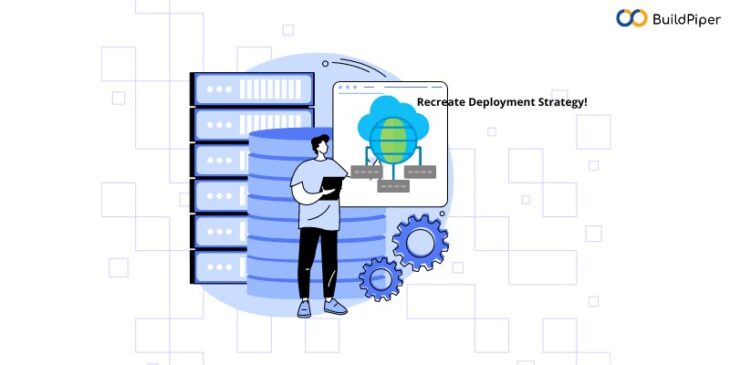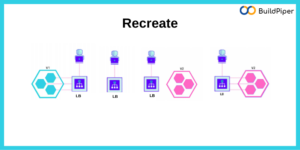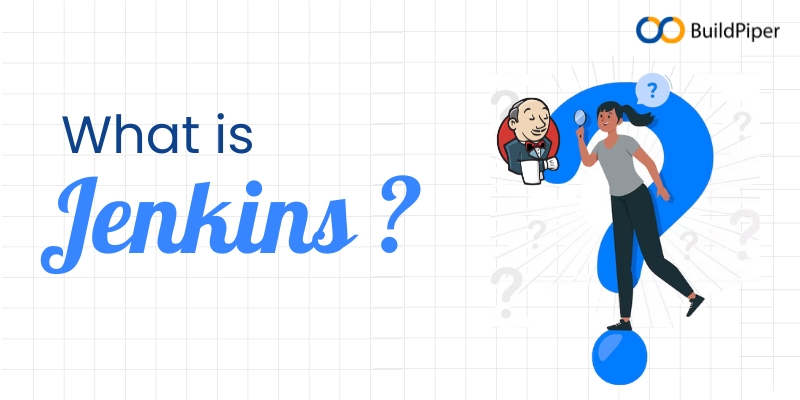
Here’s everything you need to know about this ultra-modern Kubernetes Deployment technique. Read the blog to know more about Recreate deployment, when to use this strategy, and its advantages!
Tune in to Enjoy the “DevOps Music”!
Most enterprise DevOps teams use containers to ship applications and Kubernetes, an orchestration platform, to manage them. If DevOps is a symphony orchestra conducting hundreds or thousands of apps, Kubernetes is the conductor, or maestro, that enables containers (musicians in this metaphor) to work together in harmony.
As enterprises strive for more exchange of information between multi-cloud environments and apps, the role of Kubernetes is growing across several cloud and on-premises venues.
The Global Kubernetes Solutions Market Size was estimated at USD 1747.20 million in 2021 and is projected to reach USD 5467.40 million by 2028, exhibiting a CAGR of 17.70% during the forecast period.
What is a Kubernetes Deployment Strategy?
A deployment strategy is a technique used by DevOps teams to successfully launch a new version of the software solution they wish to provide. In Kubernetes, deployment is the process of installing a new version of an application or workload on Kubernetes pods.
These techniques or strategies cover how network traffic in a production environment is transitioned from the old version to the new version. Based on the environment setup and established goals, a deployment strategy can influence downtime and an enterprise’s operational costs.
Among several Kubernetes Deployment strategies such as Rolling, Blue-Green, Canary, Shadow and A/B testing, Recreate is one of them. Let’s discuss this Kubernetes deployment strategy, its advantages and when to use it, here in this blog!
Let’s BEGIN!
Recreate Deployment Strategy- best for DEVELOPER ENVIRONMENT!
Recreate deployment is a basic deployment pattern in Kubernetes which simply shuts down all the old pods and replaces them with new ones. The deployment strategy consists of shutting down version 1 and then deploying version 2 after version 1 is turned off. The Recreate strategy can result in downtime as old pods are deleted before ensuring that the new pods are rolled out with the new version of the application. This downtime of the service depends on both the shutdown and boot duration of the application.
A Recreate Deployment Strategy is an all-or-nothing process that lets you update an application immediately, with some downtime.
When to Use Recreate Deployment?
You can use the recreate deployment strategy,
- When you need to run migrations or other data transformations before your new code starts.
- When your application does not support having new and old versions of the application code running simultaneously.
- When you want to use an RWO(Read Write Once) volume, which does not get supported when shared between multiple replicas.
- When you’re releasing to development/staging environments.
[Good Read: BuildPiper Says: “Deploy Your Apps with CANARY now!”]
Advantages of Recreate Deployment!
Some of the benefits that enterprises can reap from executing this Kubernetes deployment strategy include,
- The Recreate Deployment Kubernetes strategy is simple to implement as only one version of the model needs to be managed at any time.
- Using this strategy reduces the deployment risks.
- There is no need for the new deployment version to be rollback compatible as there is only one environment to manage.
- This strategy is less expensive and is mainly used when an enterprise wants to change the application from scratch.
- This strategy doesn’t require a load balancer as there’s no shifting of traffic from one version to another in the live production environment.
The Downtime!
In the Recreate Deployment Kubernetes strategy, the dev team shuts down the old version of the application entirely, deploys the new version, and then reboots the whole system. This deployment technique builds a system downtime between shutting down the old software and booting the new one. The amount of downtime incurred using this deployment strategy depends on how long the application takes to shut down and start the backup.
How the end-users get affected: The strategy affects the end users due to downtime. The users need to wait until the application goes live again to use the software. This is why enterprises refrain from using this deployment strategy.
Should you Deploy using Recreate?
This strategy has its own pros & cons and businesses can use it to deploy a new version of their applications. But, before you plunge into the execution, you must carefully assess your team’s, project’s, and company’s needs and business goals. Also, note how much downtime your organization can afford and other cost constraints.
Moreover, deploying Kubernetes can be difficult, at times. You can check out a reliable platform such as BuildPiper for a seamless, secure and faster Kubernetes deployment.
BuildPiper is a full-featured, end-to-end Kubernetes & Microservices Application Delivery Platform that enables teams to onboard & securely manage Kubernetes & Microservices application setup and deployments, with the ability to run zero-touch, fully-automated & secured CI/CD pipelines.
Explore more about this powerful Microservices & Kubernetes Delivery platform to know its other interesting features and how it can empower teams with a seamless and secure Kubernetes deployment! Contact us NOW!





